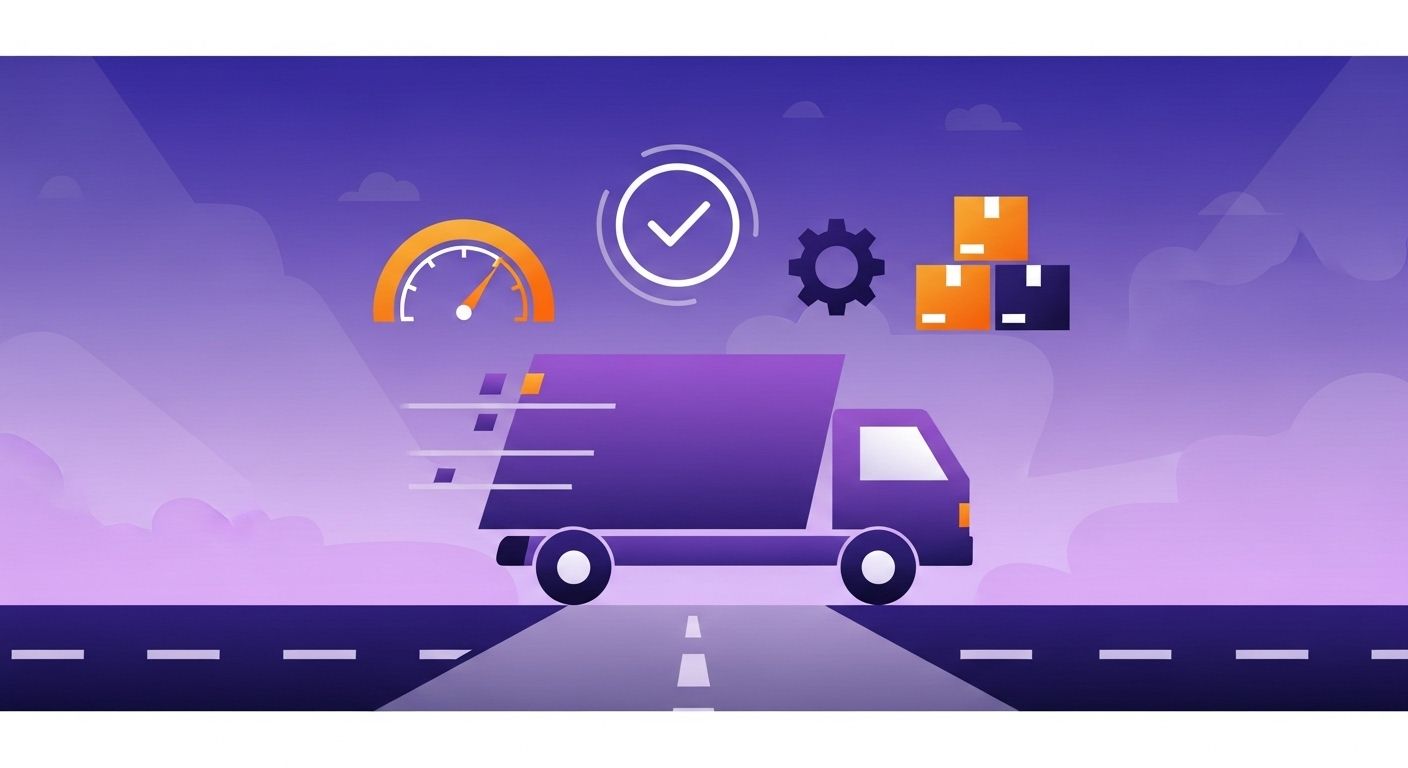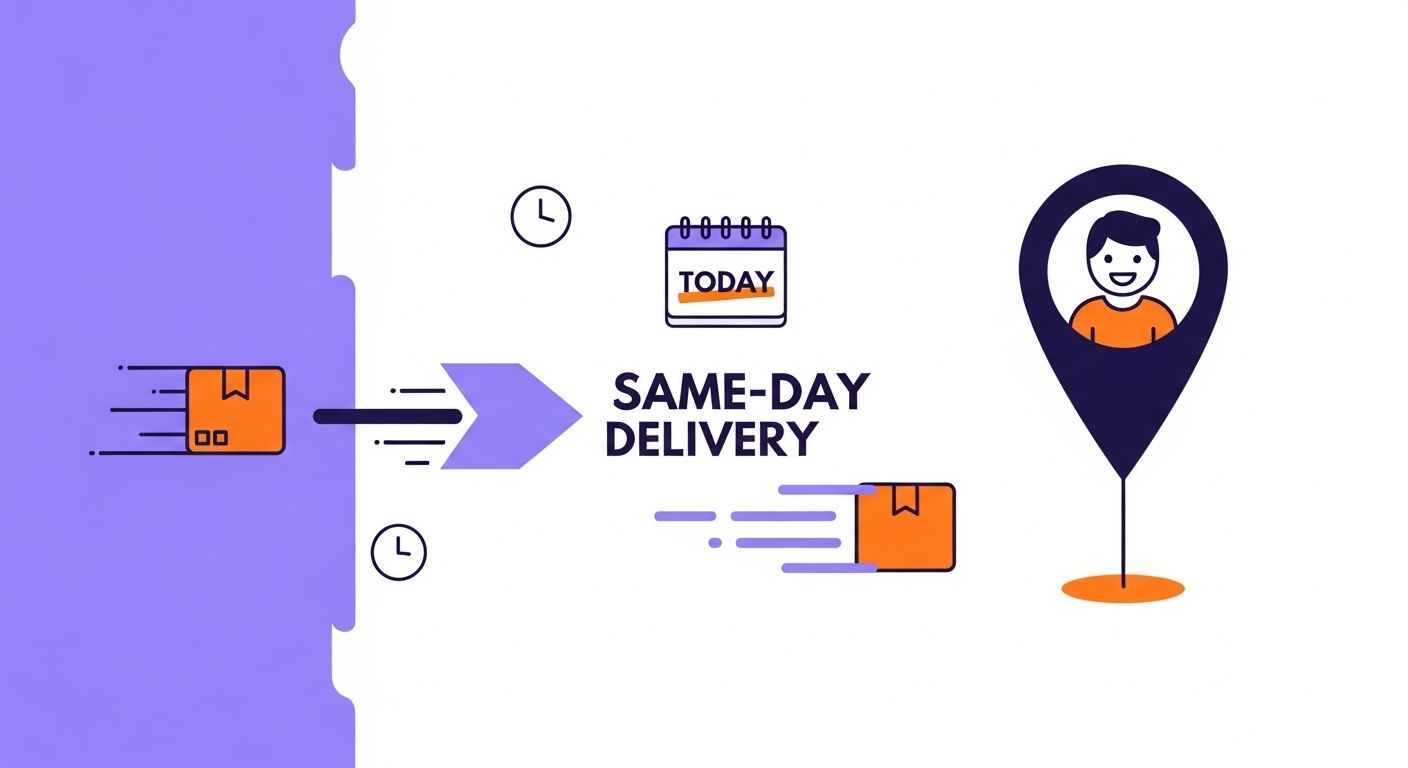Controlling deliveries with precision has never been more critical. Between pickup and delivery windows, customer‑promised SLAs, redeliveries, and driver communication, small deviations quickly become costs and poor experiences. The good news: you can simplify operations, gain end‑to‑end visibility, and standardize processes with accessible, easy‑to‑use technology.
In this article, you’ll learn how to maximize results by adopting the easiest way to control your deliveries: combining operational best practices with a delivery management platform that centralizes status, proof of delivery, and real‑time tracking—Meu Rastreio’s Delivery Control.
Why delivery control is mission‑critical in logistics The delivery is the moment of truth. It’s where promise meets reality. Strong delivery control directly impacts:
- Logistics costs: fewer redeliveries, less idle time, and more efficient routes.
- Revenue and loyalty: SLA/OTIF compliance and better customer experience.
- Team productivity: fewer phone calls, fewer spreadsheets, and less administrative rework.
- Decision‑making: reliable data to refine processes and allocate resources. Without visibility and standardization, operations become reactive. With the right processes and technology, you operate proactively—guided by alerts, automation, and KPIs.
Top day‑to‑day challenges Lack of real‑time visibility Where is the driver? Has the order gone out for delivery? When will it arrive? Without a unified dashboard, teams waste time hunting for updates across multiple channels.
Customer communication and support friction Without proactive notifications and clear statuses, your support team gets flooded with “Where is my order?”, driving costs and dissatisfaction.
Inefficient routes and poorly sized capacity Manual planning often ignores constraints (time windows, weight, priority, geography), creating idle time, detours, and delays.
Proof of delivery and auditability Paper receipts, photos in messaging apps, and scattered signatures make auditing, fraud prevention, and incident management harder.
Measurement and continuous improvement Without KPIs, exceptions turn into routine. It’s difficult to spot bottlenecks, measure OTIF, redelivery rate, or cost per delivery.
The easiest way: centralize control with technology The simplest, most scalable approach is to adopt a platform that integrates planning, execution, and analysis—without adding complexity for drivers or back office.
With Meu Rastreio’s Delivery Control, you can:
- Track deliveries in real time on a single dashboard.
- Standardize delivery statuses and events (on route, attempt, delivered, exceptions).
- Send automated customer notifications (dispatched, ETA, confirmed).
- Capture digital Proof of Delivery (POD) with photo, signature, geolocation, and notes.
- Handle exceptions and reschedule redeliveries in a few clicks.
- Integrate via API with your ERP, e‑commerce, or TMS to eliminate rework.
- Monitor logistics KPIs in dashboards and reports. The result: simplicity for field teams, visibility for managers, and audit‑ready evidence for compliance.
Practical tips and strategies to maximize results
- Design a lean, standardized status flow Define a clear sequence of events: received, staging, on route, delivered, attempt, exception, redelivery. Less is more—too many statuses confuse teams and increase errors.
- Configure these statuses in your system.
- Apply rules by service type (express, scheduled, reverse).
- Train drivers on when and how to update.
- Set realistic SLAs and time windows by segment Group customers by region, profile, and criticality. Set timelines aligned to distance, traffic, and capacity.
- Assign windows and priorities in route planning.
- Trigger risk alerts before SLA breaches.
- Align sales promises with historical performance.
- Route with constraints and field validation Routes that look great on paper can fail in the field. Capture driver feedback: blocked streets, gates, peak hours.
- Consider weight, volume, windows, and priorities.
- A/B test alternative routes.
- Validate dwell times and zone averages to refine estimates.
- Strengthen digital Proof of Delivery (POD) Standardize evidence. Require photo, signature, and geolocation. Capture notes (e.g., “received by security, John Doe, ID XXXX”).
- Create checklists by delivery type.
- Use labels/QR codes for fast scanning and to avoid swaps.
- Review POD samples daily to prevent deviations.
- Proactively notify customers Automate key messages: out for delivery, ETA, delivered. This reduces support contacts and improves satisfaction.
- Personalize templates by channel (SMS, email, WhatsApp).
- Include a tracking link and rescheduling options when applicable.
- Manage exceptions in real time Build a prioritized exception queue: recipient absent, incomplete address, damage, restricted access.
- Define playbooks by exception type.
- Enable automatic redeliveries with chargeback when appropriate.
- Escalate critical cases to Sales/CS.
- Monitor the KPIs that move the needle Track daily and drill down by route, driver, and region.
- OTIF (On Time In Full)
- SLA compliance
- Cost per delivery and per redelivery
- Redelivery/attempt rate
- Door‑to‑door lead time
- Route productivity (deliveries/hour)
- Average dwell time
- Integrate systems and eliminate rework Avoid double entry and shadow spreadsheets.
- Integrate orders, invoices, and exceptions via API.
- Standardize product codes and exception reasons.
- Automate delivery reconciliation and reporting.
- Train the team and establish governance Great processes only work with engaged people.
- Train drivers on the app and POD best practices.
- Run short daily stand‑ups to tune routes and handle exceptions.
- Maintain a living operations playbook and KPI ownership.
- Start small, scale fast Roll out by cell/route, validate gains, and expand.
- Choose a pilot region.
- Compare before/after KPIs.
- Iterate, then scale across the operation.
Essential delivery control metrics OTIF and SLA The bar for excellence. Use performance tiers and regional targets. Prioritize recurring delay causes for immediate action.
Cost per delivery Include mileage, driver time, redeliveries, and support. Reducing attempts and optimizing routing has a direct impact.
Redelivery rate and reasons Classify standardized reasons (absence, address, damage, restriction). This guides actions such as address confirmation and time‑window adjustments.
Route productivity Deliveries per hour and stops per mile help balance loads and refine routing.
Recipient satisfaction A simple post‑delivery survey (stars/comment) feeds continuous improvement and time‑window design.
Practical case (hypothetical): from chaos to predictability A regional food distributor made 1,200 deliveries/month with high support call volume and many redeliveries due to recipient absence. Operations relied on spreadsheets and group chats. What changed with Meu Rastreio:
- Standardized statuses and a driver app with digital POD.
- Automated customer notifications (dispatch, ETA, delivery confirmation).
- Exception dashboard with playbooks by reason.
- KPI dashboards covering OTIF, redeliveries, and route productivity. Results in 90 days:
- Significant drop in “Where is my order?” calls thanks to real‑time tracking.
- Consistent OTIF growth through proactive SLA risk management.
- Noticeable reduction in redeliveries via recipient alerts and refined time windows.
- Back‑office productivity gains through integrations and automated reports. Key takeaway: starting with a pilot region, upskilling drivers, and reviewing exceptions daily enabled safe, sustained scaling.
Trends shaping delivery management
- End‑to‑end visibility and predictive analytics to anticipate delays before they happen.
- Sustainable last mile: optimized routes, micro‑hubs, and consolidated drops.
- Contactless proof and information security: digital POD with privacy and compliance.
- Automated communications: multichannel journeys to reduce friction and lift NPS.
- Open integrations: connected ecosystems (ERP, WMS, TMS, e‑commerce) to eliminate silos.
Why Meu Rastreio’s Delivery Control simplifies operations
- Fast rollout and intuitive UI for drivers and back office.
- Real‑time tracking with standardized statuses and SLA alerts.
- Complete digital POD (photo, signature, geolocation).
- Automated recipient notifications that reduce support volume.
- Centralized exception and redelivery management.
- Dashboards and reports with essential KPIs for agile decisions.
- API integrations to prevent rework and ensure consistent data.
Conclusion: simple, predictable, and data‑driven Maximizing delivery control doesn’t require complex operations—it requires clear processes, trustworthy data, and a platform that unifies execution and analysis. By standardizing statuses, strengthening proof of delivery, automating communications, and tracking KPIs, your team moves from reactive firefighting to proactive management—with lower costs, higher predictability, and a better customer experience.
Ready to see it in action? Schedule a free demo of Meu Rastreio’s Delivery Control and discover the easiest way to control your deliveries with efficiency and scale: https://meurastreio.app/pt-BR/controle-de-entregas











